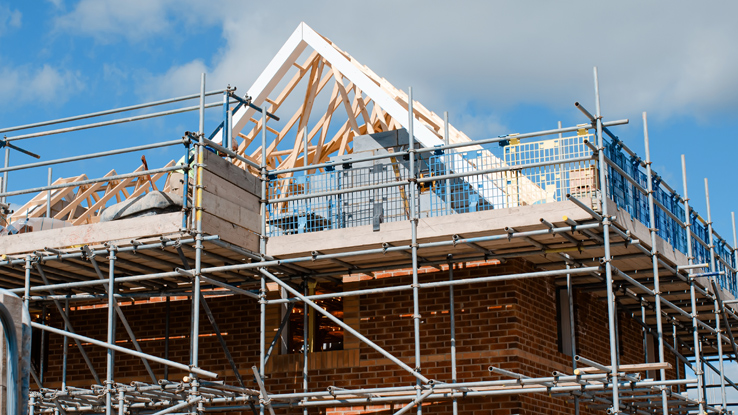Like the structures they cover, property insurance policies tend to be strongest when built on a solid foundation, and a key component is the initial reconstruction cost estimate (RCE). Done properly, it can help support dependable insurance-to-value (ITV), which can inform suitable policy limits and reliable quoting. That can be good for insurers and policyholders.

As a leader in replacement cost estimation for more than 20 years, Verisk recommends five strategies to help avoid outdated valuations that could leave insurers and their customers vulnerable in the event of a total loss:
Strategy 1 – Track monthly pricing changes: The pandemic triggered disruptions in supply chains and worker shortages, and prices for some materials and labor soared at triple-digit annual rates. Even after some prices retreated from pandemic highs, Verisk data shows the cost to rebuild a property is still more than 11 percent higher than it was pre-pandemic. Monthly pricing data makes the difference. More frequent updates for construction materials and labor can soften the huge spikes and means fewer surprises.
Strategy 2 – Align coverage to claims: The truest test of an ITV solution may be how it performs with an actual total loss, which can yield critical data to validate and calibrate RCEs. Verisk compares valuations for specific structures to actual reconstruction estimates written by claims and construction professionals. These are drawn from millions of claims estimates each year, including full and partial losses that span a wide range of property sizes and types, coverages, and locations.
Strategy 3 – Prepare for more natural catastrophes: As natural catastrophes become more frequent, severe, and widespread, granular property data and reliable RCEs can help keep policyholders appropriately protected and supported in a time of loss.
Strategy 4 – Measure contents more precisely: Estimating the value of a building’s contents has traditionally presented its own challenge for property insurers, separate from the need for detailed information about a structure’s type, age, and size. Verisk offers distinct strategies for personal and commercial lines insurers to help remove some of the guesswork from this process without adding legwork for insurers or property owners.
Strategy 5 – Prefill to help pull everything together faster: Prefill data can be a powerful tool to help build fast, low or no-touch workflows around insurance-to-value. Current and precisely curated data about a structure’s age, square footage, and use form the backbone of reliable reconstruction cost estimates (RCEs). Without confidence in those key characteristics of a structure, the estimates may be less trustworthy.
Any one of these strategies can help propel insurers forward toward more reliable RCEs that help them write appropriate coverage limits into every policy—at inception and renewal. Applied together, they can help achieve and maintain a more precise alignment between anticipated and actual exposure.
Read the full whitepaper to learn more.
Trish Hopkinson is product director, 360Value personal lines, for Verisk. You can reach Trish at thopkinson@verisk.com.
Joel Teemant is product director, 360Value commercial lines, for Verisk. He can be reached at jteemant@verisk.com.




















 Too High? Too Low? BMS Analyzes Early Wildfire Insured Loss Estimates
Too High? Too Low? BMS Analyzes Early Wildfire Insured Loss Estimates  Study Shows Some Buildings Along Miami Coastline Are Sinking
Study Shows Some Buildings Along Miami Coastline Are Sinking  New Commercial Auto Exposures: The Evolution of Terror Liability Risk
New Commercial Auto Exposures: The Evolution of Terror Liability Risk  States Push Changes to Driver, Auto Insurance Requirements in 2025
States Push Changes to Driver, Auto Insurance Requirements in 2025 